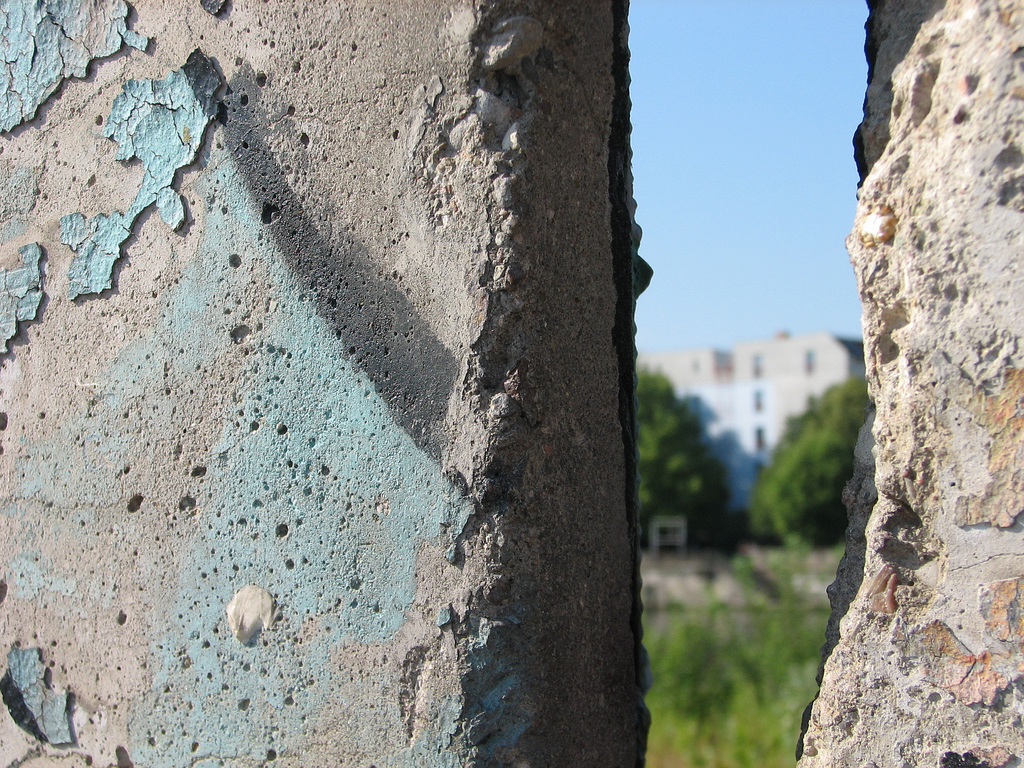
1989: The Struggle to Create Post-Cold War Europe
by Mary Elise Sarotte
–Reviewed by Adam Fleisher
 It’s been more than 20 years since the fall of the Berlin Wall, and we still can’t agree on how it happened. One general approach is to give some credit to American policy, and in particular Ronald Reagan’s famous “tear down this wall” speech, for creating conditions that weakened the East German regime and thereby empowered the East German people.
It’s been more than 20 years since the fall of the Berlin Wall, and we still can’t agree on how it happened. One general approach is to give some credit to American policy, and in particular Ronald Reagan’s famous “tear down this wall” speech, for creating conditions that weakened the East German regime and thereby empowered the East German people.
Mary Elise Sarotte’s 1989, however, takes a much more specific approach to the end of the Cold War. She focuses on the “unintentional” opening of the wall, precipitated by an East German regime spokesman named Guenter Schabowski. In a press conference on the evening of November 9, 1989, he bungled an announcement about travel law alterations that gave the impression that it was “possible for every citizen” to leave “immediately.” People started streaming for the exits, and in the confusion, the border guards did not stop them. The rest is history.
Sarotte, a professor of international relations at USC, focuses the majority of her study on how that history unfolded. She concludes that the reunification of Germany was a success, but that the management of relations with Russia was not. And, she says, neither outcome was inevitable.
After the wall came down, British Prime Minister Margaret Thatcher and American Secretary of State James Baker worried about the speed with which the status quo was dissolving. Reunification was not a priority for them – moving slowly and managing democratization were. President George H.W. Bush disagreed. He was “not afraid of reunification,” as he said in his memoirs. And he was open to letting Helmut Kohl, then the West German Chancellor, move forward with it.
Kohl seems to be the hero of 1989. He, according to Sarotte, saw the urgency in bringing the East into a unified Germany, and he responded far more quickly to East German demands for “unity, unity, unity” than the nervous big powers. Kohl insisted on complete integration, from military unification under NATO to economic integration into the European Community.
The NATO point – the march of the organization’s borders eastward, toward Russia – proved especially contentious, and remains so today. The problem originates in Kohl’s plan to use West Germany’s existing legal structure to incorporate the East. (It’s what Sarotte calls the “prefab” model of reunification.) A post-World-War-II-era law allowed former parts of Germany to voluntarily come under the jurisdiction of West Germany. Using the law meant that East Germany could quickly be merged with West, once it organized into states and expressed a desire to unify. It also meant that all of West Germany’s existing treaty structures would prevail.
The border of NATO thus shifted by default, accomplishing the “swift installation of the Western military pact on the still-smoking ruins of the old one.” Sarotte questions the propriety of this expansion since it unnecessarily continued the military divide between NATO and Russia into the post-Cold War period. She also argues that it might have been better managed with clearer communication.
Still, Russia’s hostility to NATO expansion was probably unavoidable and, as Sarotte notes, there never was any formal prohibition on expansion. Whether Russian and Western interests could ever have been reconciled remains an open question. But 1989 ably demonstrates that the (probably necessary) haste to create order after the fall of the Berlin Wall was successful insofar as it led to a united and thriving Germany. But it also represents a missed opportunity with Russia, a failure to establish a cooperative relationship with the country when it was both vulnerable and willing to work with the West.
Excerpt: In 1989-90, [Kohl] displayed a talent for knowing when he should submit his visions to authentic and credible legitimizing moments. In other words, he knew when he needed popular support, but realizing that did not mean either that he should completely stage an appropriate event or be at its mercy. Rather, by influencing the East German vote with promises about the one-to-one exchange rate, scheduling the FRG’s own election early in December 1990, and ensuring that it would be the first all-German national election, he improved the chances that both elections would produce results favorable to himself and his party, yet remain credible. He thereby made a virtue out of necessity.
Further Reading: The Year that Changed the World: The Untold Story Behind the Fall of the Berlin Wall by Michael Meyer and The Fall of the Berlin Wall
by William F Buckley Jr.
Adam Fleisher is a law student at the University of Virginia.
*Photo courtesy Roozbeh Rokni.




Send A Letter To the Editors